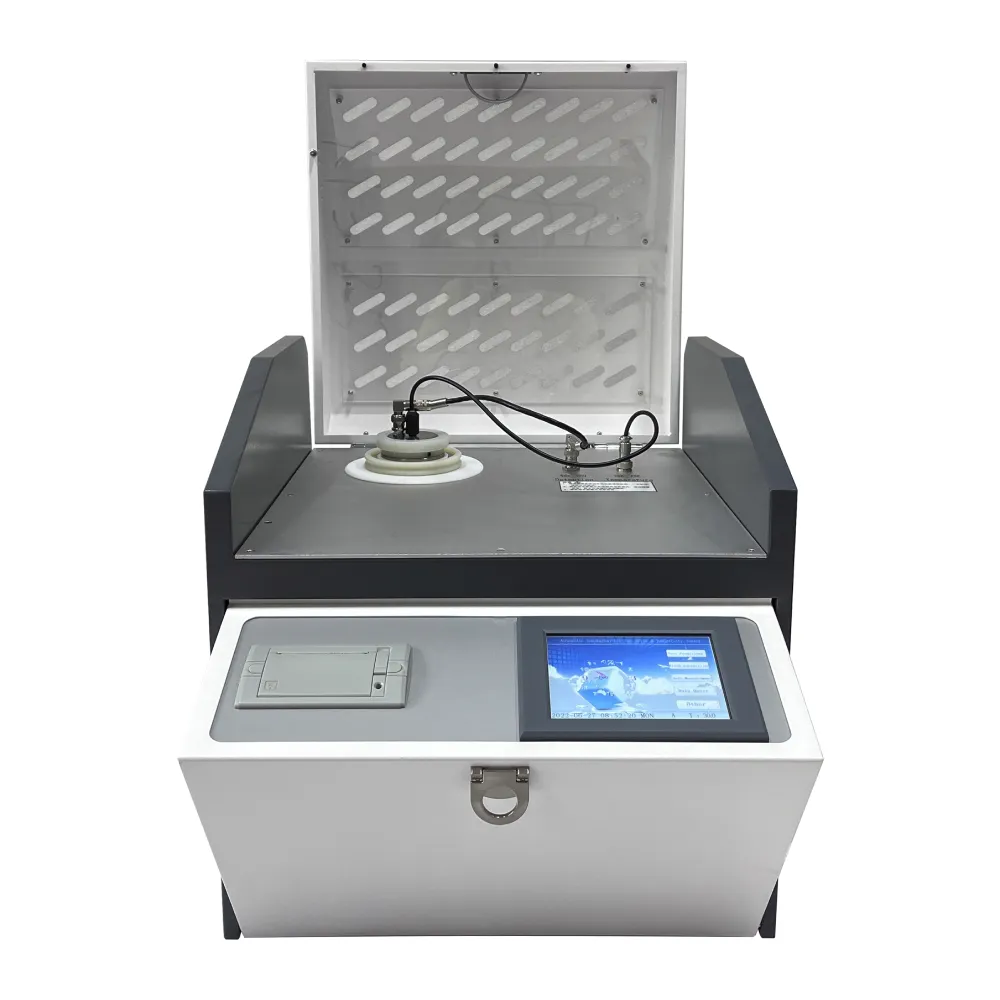TEL:
+86-0312-3189593
 English
English

Telephone:0312-3189593

Email:sales@oil-tester.com

-
 Afrikaans
Afrikaans -
 Albanian
Albanian -
 Amharic
Amharic -
 Arabic
Arabic -
 Armenian
Armenian -
 Azerbaijani
Azerbaijani -
 Basque
Basque -
 Belarusian
Belarusian -
 Bengali
Bengali -
 Bosnian
Bosnian -
 Bulgarian
Bulgarian -
 Catalan
Catalan -
 Cebuano
Cebuano -
 China
China -
 China (Taiwan)
China (Taiwan) -
 Corsican
Corsican -
 Croatian
Croatian -
 Czech
Czech -
 Danish
Danish -
 Dutch
Dutch -
 English
English -
 Esperanto
Esperanto -
 Estonian
Estonian -
 Finnish
Finnish -
 French
French -
 Frisian
Frisian -
 Galician
Galician -
 Georgian
Georgian -
 German
German -
 Greek
Greek -
 Gujarati
Gujarati -
 Haitian Creole
Haitian Creole -
 hausa
hausa -
 hawaiian
hawaiian -
 Hebrew
Hebrew -
 Hindi
Hindi -
 Miao
Miao -
 Hungarian
Hungarian -
 Icelandic
Icelandic -
 igbo
igbo -
 Indonesian
Indonesian -
 irish
irish -
 Italian
Italian -
 Japanese
Japanese -
 Javanese
Javanese -
 Kannada
Kannada -
 kazakh
kazakh -
 Khmer
Khmer -
 Rwandese
Rwandese -
 Korean
Korean -
 Kurdish
Kurdish -
 Kyrgyz
Kyrgyz -
 Lao
Lao -
 Latin
Latin -
 Latvian
Latvian -
 Lithuanian
Lithuanian -
 Luxembourgish
Luxembourgish -
 Macedonian
Macedonian -
 Malgashi
Malgashi -
 Malay
Malay -
 Malayalam
Malayalam -
 Maltese
Maltese -
 Maori
Maori -
 Marathi
Marathi -
 Mongolian
Mongolian -
 Myanmar
Myanmar -
 Nepali
Nepali -
 Norwegian
Norwegian -
 Norwegian
Norwegian -
 Occitan
Occitan -
 Pashto
Pashto -
 Persian
Persian -
 Polish
Polish -
 Portuguese
Portuguese -
 Punjabi
Punjabi -
 Romanian
Romanian -
 Russian
Russian -
 Samoan
Samoan -
 Scottish Gaelic
Scottish Gaelic -
 Serbian
Serbian -
 Sesotho
Sesotho -
 Shona
Shona -
 Sindhi
Sindhi -
 Sinhala
Sinhala -
 Slovak
Slovak -
 Slovenian
Slovenian -
 Somali
Somali -
 Spanish
Spanish -
 Sundanese
Sundanese -
 Swahili
Swahili -
 Swedish
Swedish -
 Tagalog
Tagalog -
 Tajik
Tajik -
 Tamil
Tamil -
 Tatar
Tatar -
 Telugu
Telugu -
 Thai
Thai -
 Turkish
Turkish -
 Turkmen
Turkmen -
 Ukrainian
Ukrainian -
 Urdu
Urdu -
 Uighur
Uighur -
 Uzbek
Uzbek -
 Vietnamese
Vietnamese -
 Welsh
Welsh -
 Bantu
Bantu -
 Yiddish
Yiddish -
 Yoruba
Yoruba -
 Zulu
Zulu
2 сар . 18, 2025 12:29
Back to list
PS-YC115 On-Load Tap-Changer Tester
In the realm of modern power distribution, the off-load and on-load tap changing transformers are indispensable. These transformers play a crucial role in regulating voltage levels and ensuring the reliability and efficiency of electrical power systems. Understanding their functions, differences, and advantages provides a comprehensive insight into their significance in electrical engineering.
Maintenance strategies for both transformer types are pivotal for longevity and reliability. Off-load transformers benefit from routine inspections to ensure tap settings remain optimized against any system changes, while OLTCs demand more frequent and technically advanced maintenance protocols. The complexity of their mechanisms necessitates regular monitoring and servicing to preemptively address wear and tear, especially on diverter contacts and mechanisms, ensuring their continuous accurate performance. The integration of off-load and on-load tap changing transformers into a comprehensive smart grid strategy showcases their role beyond traditional power regulation. Smart grids rely on adaptive components to manage distributed energy resources and varying load demands efficiently. Tap changing transformers, particularly OLTCs, enable automated and remote voltage control through advanced communication systems, promoting grid resilience and minimizing energy losses. Their adaptability is further enhanced when coupled with intelligent control systems that optimize tap settings in real-time, reflecting the dynamic nature of load patterns and energy generation. Moreover, the future of off-load and on-load tap changing transformers is closely entwined with technological advancements. The emergence of solid-state transformers (SSTs) hints at potential evolutions in tap changing technology, promising faster response times, enhanced efficiency, and greater integration capabilities within digitized grids. While SSTs may redefine tap changing paradigms, the fundamental principles established by traditional tap changers continue to underscore their enduring importance in global energy infrastructure. In conclusion, off-load and on-load tap changing transformers are pivotal in both classical and contemporary electrical systems. Their distinct functionalities cater to varied requirements — from economic efficiency in stable conditions to advanced adaptability in dynamic environments. As power systems evolve, these transformers sustain their relevance, driving innovations in smart grid technologies and reinforcing the dependability of electricity supply worldwide. Investing in the appropriate tap-changing technology not only optimizes operational efficiency but also aligns with strategic energy management goals, ultimately reshaping the future of power delivery across industries.


Maintenance strategies for both transformer types are pivotal for longevity and reliability. Off-load transformers benefit from routine inspections to ensure tap settings remain optimized against any system changes, while OLTCs demand more frequent and technically advanced maintenance protocols. The complexity of their mechanisms necessitates regular monitoring and servicing to preemptively address wear and tear, especially on diverter contacts and mechanisms, ensuring their continuous accurate performance. The integration of off-load and on-load tap changing transformers into a comprehensive smart grid strategy showcases their role beyond traditional power regulation. Smart grids rely on adaptive components to manage distributed energy resources and varying load demands efficiently. Tap changing transformers, particularly OLTCs, enable automated and remote voltage control through advanced communication systems, promoting grid resilience and minimizing energy losses. Their adaptability is further enhanced when coupled with intelligent control systems that optimize tap settings in real-time, reflecting the dynamic nature of load patterns and energy generation. Moreover, the future of off-load and on-load tap changing transformers is closely entwined with technological advancements. The emergence of solid-state transformers (SSTs) hints at potential evolutions in tap changing technology, promising faster response times, enhanced efficiency, and greater integration capabilities within digitized grids. While SSTs may redefine tap changing paradigms, the fundamental principles established by traditional tap changers continue to underscore their enduring importance in global energy infrastructure. In conclusion, off-load and on-load tap changing transformers are pivotal in both classical and contemporary electrical systems. Their distinct functionalities cater to varied requirements — from economic efficiency in stable conditions to advanced adaptability in dynamic environments. As power systems evolve, these transformers sustain their relevance, driving innovations in smart grid technologies and reinforcing the dependability of electricity supply worldwide. Investing in the appropriate tap-changing technology not only optimizes operational efficiency but also aligns with strategic energy management goals, ultimately reshaping the future of power delivery across industries.
Previous:
Latest news
-
Testing Equipment Industry Sees Major Advancements in 2025: Smart & Precision Technologies Lead the WayNewsJun.06,2025
-
Applications of Direct Current Generators in Renewable Energy SystemsNewsJun.05,2025
-
Hipot Tester Calibration and Accuracy GuidelinesNewsJun.05,2025
-
Digital Circuit Breaker Analyzer Features and BenefitsNewsJun.05,2025
-
Benefits of Real-Time Power Quality Monitoring Devices for Industrial EfficiencyNewsJun.05,2025
-
Earth Fault Loop Testing in High-Rise Building Electrical SystemsNewsJun.05,2025



